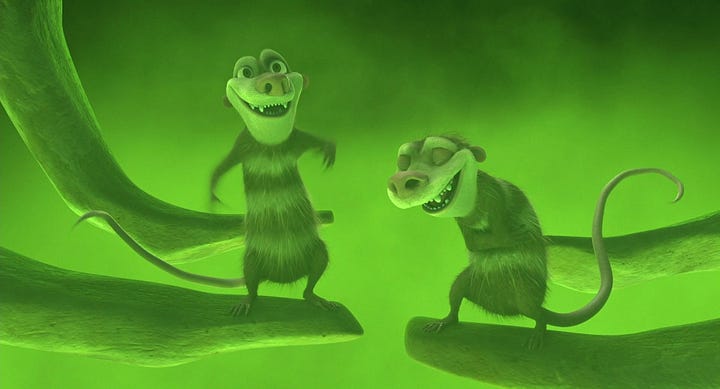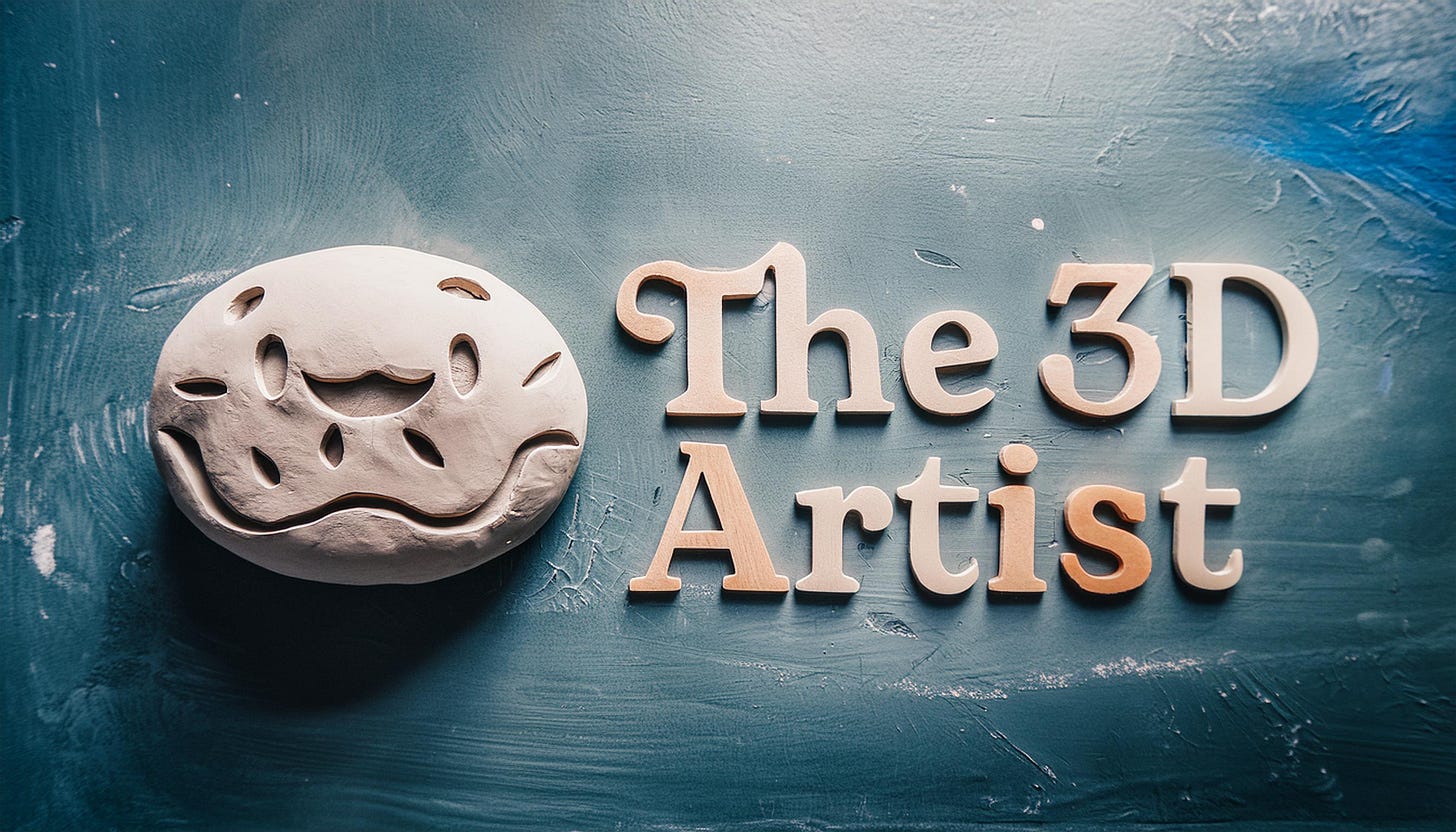Embracing the "No": How Frequent Feedback Fosters Creative Excellence
Letting Go of Perfectionism to Find Success Through Quick Iterations
It was a significant milestone when I finally felt like a true lighting artist working on an animated film. It was 2009. I had already completed my first project, Ice Age 3, but every shot I completed in that film was what is called a “Same As” shot. Basically, someone else lit an original, and it was my job to copy that work and ensure that every other surrounding shot matched the look created by the original artist.




This was standard work for a junior-level artist, and I was happy to do it. But getting my first shots where I would build the entire lighting setup myself was immense.
I was working on the movie Rio, and the sequence was simple. It was a 3-shot sequence of birds being smuggled onto a plane and that plane taking off into the sunrise. The art department provided me with reference images and paint-overs as a guide, and I was determined to make this my masterpiece shot.
I became obsessed with perfectly recreating the reference material. Those images were my north star - I meticulously matched every shadow value and light angle, ensuring my rising sun was the exact same size and position to capture the desired morning look. I analyzed saturation levels and value ranges to ensure my image perfectly matched the original reference. I wanted the director to see my work and exclaim, "Wow! This is exactly what I envisioned!" just like Ralphie's fantasy of getting an A++++++++++ in A Christmas Story.
After weeks of obsessive pixel-tweaking, I finally marked the shot as ready for review, nervously awaiting my turn in the daily review session. I expected the shot to come up and impress them, and perhaps we would dive into the nuanced detail of what I had constructed.
But when my shot came up, the art director said, "Hey...didn't we change this to an afternoon scene?" The director glanced at the screen and gave a quick “Yep,” and a note was made: "Change to afternoon." And that was it. The next shot came on screen.
I sat stunned in that screening room. After weeks of obsessively matching that morning reference imagery, it turned out the foundation I was building upon was wrong due to a simple lack of communication. At the time, I blamed the art department, production, and anyone but myself. But over the years, I've realized the fault was mine.
In a creative role, you should never hide your work from those who need to approve it until the last minute. It's tempting to avoid showing incomplete work out of fear of negative feedback, but that's the wrong approach. True professionals understand that a first pass is just a starting point en route to the final product. Withholding it only increases the likelihood of unexpected outcomes.
As a new artist, this requires separating yourself from the work. A critique is not an assessment of you as an artist but feedback on the work. Finding that balance can feel difficult early in your career when trying to impress everyone, but it is crucial to long-term development.
Let me provide a contrasting example from my perspective after almost 20 years in the industry:
The Photo Studio
Recently, I was asked to create an image using some new tools inside Substance 3D Stager, featuring a handbag designed by my brilliant colleague Cino Lai. With minimal guidelines, I excitedly devised a concept - since I view Stager as a virtual photo studio, why not place the 3D handbag into a Firefly-generated photography studio environment?



Instead of laboring for weeks, I simply downloaded some stock models aand quickly render my envisioned layout. I then generated a Firefly image from that render and slapped the handbag in there. In about 20 minutes, I had a quick proof of concept and sent it over for an initial thumbs up.
The feedback returned quickly: thumbs down. That's not what they wanted. Instead, they wanted something more colorful and celebratory in style. Perfect! With just a 20-minute investment, I had the clarity to pivot as needed.
The reality is that, as a creative professional, someone will often give you a direction, and you'll run with it, only for them to say they wanted something different. That's just how it goes when working with clients and stakeholders. We can't change that back-and-forth process, but we can push ourselves to get to the "no" as quickly as possible. Rapidly iterating allows you to refine and ultimately create the best final result.
The 3D Artist Community Updates!
Big Week in The 3D Artist Community!
The group is up to 19 people!
We now have a VFX Supervisor, a 3D Fashion Designer, a Leader of Digital Content Creation for apparel, a Photographer and Art Director, a modeler, an Asset Supervisor for TV Production, a 3D swimwear designer, and more!
We hosted an AMA with the great Brett Morris, former Design Director for The Coca-Cola Company.
There is still time to join the community before this week’s AMA session with Samantha Anderson, an innovative expert in architectural visualization specializing in real-time environments. Samantha, a former Senior Technical Marketing Manager at Epic Games, is also the founder of Studio Ladder.
We started a book club and kicked off with Rick Rubin’s The Creative Act: A Way of Being
We also have regular online meetups where community members can connect, ask questions, and make connections around the world (we now have 5 countries represented in the group!)
3D News of the Week
Uniform 1.0 is now available on the App Store for iPad - Twitter
How 3D Digital Twins are Used in Manufacturing - Medium
The Reason for Pessimism about the Animation Industry’s Future - YouTube
Modeling & Lighting a Beautiful 3D Scene From Scratch in 5 Hours - 80.lv
Yellow raises $5M for genAI-powered 3D modeling tool - Game Developer
3D Merch is here!
3D Tutorials
3D Job Spreadsheet
Link to Google Doc With A TON of Jobs in Animation (not operated by me)
Hello! Michael Tanzillo here. I am the Head of Technical Artists with the Substance 3D Growth team at Adobe. Previously, I was a Senior Artist on animated films at Blue Sky Studios/Disney with credits including three Ice Age movies, two Rios, Peanuts, Ferdinand, Spies in Disguise, and Epic.
In addition to his work as an artist, I am the Co-Author of the book Lighting for Animation: The Visual Art of Storytelling and the Co-Founder of The Academy of Animated Art, an online school that has helped hundreds of artists around the world begin careers in Animation, Visual Effects, and Digital Imaging. I also created The 3D Artist Community on Skool and this newsletter.
www.michaeltanzillo.com
Free 3D Tutorials on the Michael Tanzillo YouTube Channel
Thanks for reading The 3D Artist! Subscribe for free to receive new posts and support my work. All views and opinions are my own!









As a more experienced artist, I actually got "worse" at posting my personal shots for feedback as I developed, and this was the article I needed to read today, so thank you so much.
As I got more experienced, I had a more innate sense of where the value groups of the image needed to go, what was not working, and what was working. Generally there were at least a few broken things, and I ended up putting myself in a situation where I was stuck on a personal project, but too prideful to show it just yet/and then spending many wasteful hours slowly chipping away at them myself, when a mentor could have gotten me there 5 times faster.
I think part of me wants to save them time or be considerate,
, forgetting that the first/second pass does not define me as an artist. It really feels so easy to though, as the final image is not complete yet.